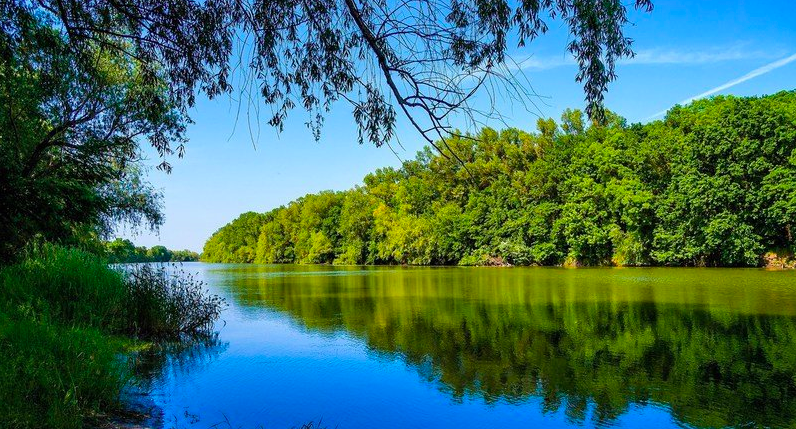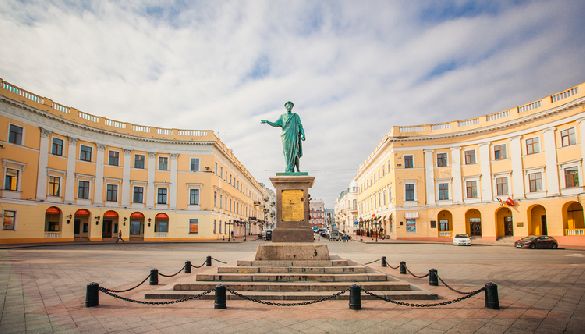"I'm not at sea": where else to go in the Odesa region?
Towns, reserves, islands, lakes — we'll surprise you with new locations
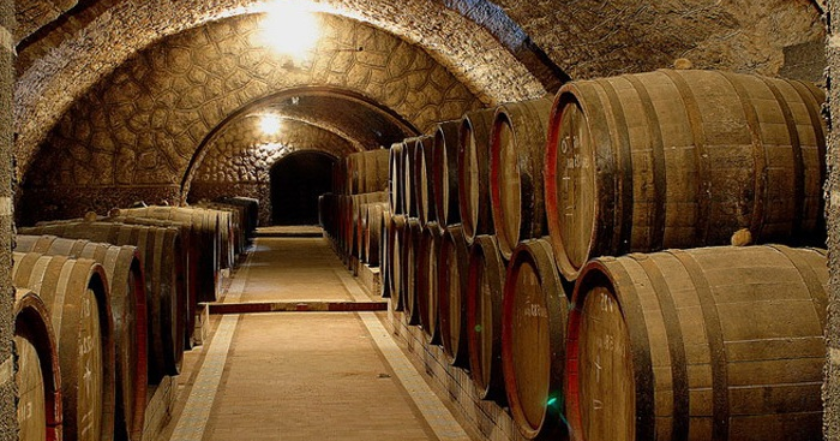
Rubryka continues to travel to interesting places in Ukraine. Many people are planning a vacation or at least a weekend somewhere closer to the sea, sun, and beach. Odesa is now one of the most popular cities in the country for summer vacation, where the Black Sea is combined with modern hotels, restaurants, and unforgettable Odesa culture. While in the back of our mind here, we imagine the long tracks of Odesa railway station, Deribasivska Street, and Langeron Beach, nightlife, and parties by the sea. However, few people know the Odesa region as a place of steppes, large lakes, endless waters, and great opportunities for researching and learning Ukrainian nature. Well, it's time to find out what, besides the sea and beaches, the region hides in the surroundings.
🏰 Bilhorod-Dnistrovskyi
The small town with about 50,000 people now living there is one of the oldest cities in Ukraine and was founded in 498 BC by Greeks during the colonization of the Northern Black Sea coast. The city is located in the Dniester estuary and is famous for the ruins of the ancient Greek city of Tiras, as well as the Akkerman fortress on the estuary, built in the 13-14 century and being one of the largest preserved fortresses in Ukraine and Eastern Europe. Over the centuries, the fortress and the city have survived Moldavian and Hungarian rule, Ottoman rule for almost 4 centuries, as well as the era of the Cossacks and the Russian Empire. You can get to the territory of the fortress by buying an entrance ticket (for adults, 80 UAH, for schoolchildren and students, 40 UAH), or as part of a tour (from 300 UAH per person).
How to get there? Distance from Odesa: 85 km. You can get there by your own vehicle, bus from Odesa or train №145K from the main station of Odesa.
🍷 Shabo

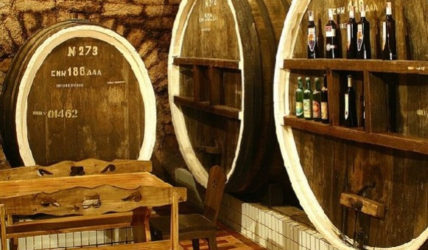
When planning a trip to Bilhorod-Dnistrovskyi, you can not miss the Shabo Wine Culture Center, located 10 km south of Akkerman. The Greeks started winemaking here, so the history of wine in these lands dates back many centuries. The beginning of cultural winemaking in this region is associated with the Swiss settlers, who founded a wine settlement here in 1822, which was renamed from the Turkish Acha-Abag to the more benevolent Shabo. The complex is located in an existing winery, so connoisseurs can enjoy and buy drinks, which include more than 80 items. The duration of the tasting tour is almost 2.5 hours, guests are accompanied by highly professional guides. Only tourists over 18 can visit the complex.
How to get there? Distance from Odesa: 70 km, you can get on the same route as to Bilhorod-Dnistrovskyi.
🚣 Vylkove

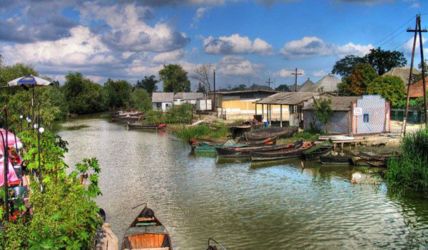
"Danube Venice" Vylkove, located in the Danube Delta, is the last city before its confluence with the Black Sea. Due to the frequent floods of the Danube during the founding of the city in the 18th century, the residents created ericas, canals that serve as streets, so every owner in the old part of the city has a boat, which is still used as a vehicle. For tourists, the city is a unique nature area, where you can enjoy fishing or experience the color of the Bessarabian steppes, along with cuisine and delicious wine.
How to get there? Distance from Odesa: 225 km, it's better to use your own vehicles, a tourist tour from Odesa or a shuttle bus.
🕊 Danube Biosphere Reserve
Vylkove is located next to the largest swampy reserve in Europe, the Danube Biosphere Reserve, which is included in the UNESCO list of bio-reserves. Biosphere reserves have the highest protection from human impact, so most of the area is closed to visitors, although there are areas that are accessible to tourists. Yes, the most popular place, the zero-kilometer marker, the confluence of the Danube into the Black Sea. The reserve is also one of the largest nesting places for migratory birds, of which there are about 300 species.
How to get there? Distance from Odesa: 230 km, located near the town of Vylkove.
🏝️ Snake Island
For experienced travelers, a trip to Snake Island, located in the Black Sea, 35 km from the Danube Delta, can be a real gem and a glorious adventure. It used to be a border service point, so access for visitors was limited. Currently, security measures are weakened due to the island being remote from the big land, and you can join tours to the island from Vylkove (it costs about 3,000 UAH). A few days of rest on an almost deserted island near the clear waters of the Black Sea will definitely be an unforgettable and even a little exotic adventure. When planning a trip, keep in mind that the island is rocky and has limited opportunities for mooring, so due to weather and sea conditions, the tour can be postponed for several days.
How to get there? Distance from Odesa: 225 km by car to Vylkove and 15 km by water on the Danube and 35 km by sea.
💦 Lake Kahul
This lake, the most remote point of the Odesa region, the southernmost after Crimea, is located in the region's southwest, almost on the border with Romania. The lakes, along with Lakes Yalpuh and Kuhurlui, are an ideal place to relax, and a trip here becomes a kind of expedition. On the lakes, you can fish, swim, enjoy some rocky landscapes and feel the power of the real steppe. There's almost no infrastructure, so it's best to bring a tent and sleeping bag, take food with you that doesn't spoil quickly in the heat. The nearest town, Reni, is 30 km from Lake Kahul, where you can stay overnight and go to the lake during the day.
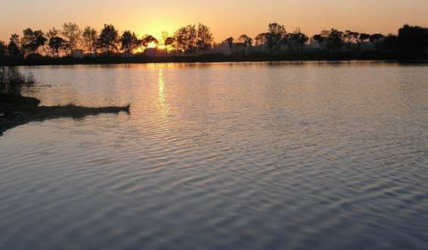
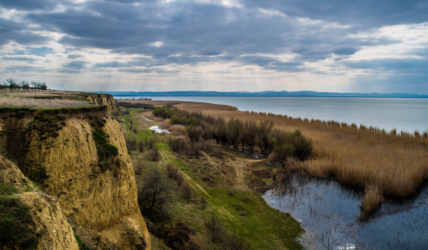
How to get there? Distance from Odesa: 340 km on the M15 highway, there are regular bus services (5.5 hours on the road, the ticket costs about 200 UAH).
⭕️ Kuialnyk Estuary
Those travelers who like to collect the "best" places shouldn't miss the lowest place in Ukraine when traveling to the Odesa region, Kuialnyk Estuary, located at -5 meters above sea level. And the estuary is a well-known balneological resort with therapeutic mud, so fans of natural cosmetic procedures made of clay and iodized mineral mud should definitely not miss this place. Due to the high content of microelements and the high temperature in summer, the estuary, which is actually a lake, often blooms, and the water turns into a thick liquid with a pink tinge. The place is really charming, the air here is filled with healing trace elements, so it's great to just come in the evening and enjoy the steppe sunset.
How to get there? Distance from the center of Odesa: from 13 km; from the railway station, there are buses №119 and 110. You can reach it by bicycle. Be sure to bring plain water to flush saltwater from your body, as there are no places for bathing.
⛰️ Sanzhiika Hills
Those, accustomed to relax on the crowded beaches of Odesa, have a great option to spend time on the beach, different from Odesa ones. In the village of Sanzhiika, there's a beach with sandy slopes, an incredible view, and the feeling that you're either on Capri or in Normandy. There aren't so many people here, and the pink sunsets are simply unforgettable. Don't forget bedding and glasses for drinks, and your evening will be the best during your vacation!
How to get there? Distance from Odesa: 35 km, the most convenient way to get your own vehicle, hitchhiking, or shuttle bus. From the outskirts of Odesa, you can reach the spot by bicycle (about 20 km in one direction).
🏰 Kuris Manor (Moorish Palace)
The estate, located in the village of Petrivka, has a refined style with elements of Gothic and Moorish style, which is the most unusual for the South of Ukraine. The house belonged to Lieutenant Colonel Kuris, an ally of Suvorov, and was a gift for his successful participation in the Second Turkish War. After the lieutenant colonel's death, the estate was completed several times. After the October coup, there was an agricultural school, and after a fire in 1990, the palace was never restored. The ruins still capture and reflect the grandeur of the 19th century. There's also an English-style park with canals and a pond. Now "Kuris Castle" is located on the territory of Petrivskyi State Agrarian Technical School and is free for visiting.
How to get there? Distance from Odesa: 62 km on the M14 highway, the most convenient way to get there is by car.
🌳 Savran forest
Savran Forest has been a state landscape reserve since 1984. It is located in the Savran district of the Odesa region, on the right bank of the Southern Bug, and is one of the largest oak formations in Ukraine, in the middle of the Black Sea steppe. It performs important soil protection and water protection functions on the border of steppe and forest-steppe zones. A total of 40 species of trees and shrubs, more than 400 herbaceous plants grow in the forest, and the main tree of this forest is considered to be the common oak. Some trees are more than 100, 300, 500 years old. The rich flora contributes to the comfortable living of various members of the fauna. The burial eagle listed in the Red Book of Ukraine nests only here.
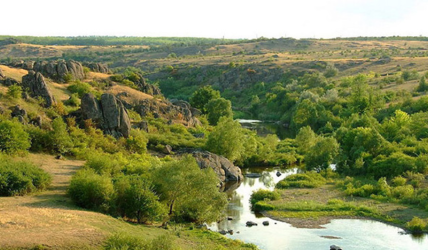
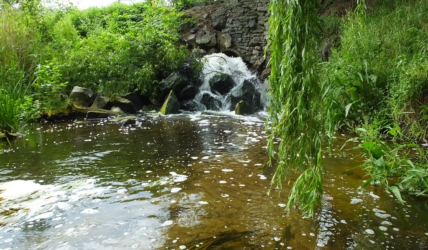
There's a well in Didovo Yar in the Savran Forest, equipped around 1768 by Uman Haydamaks who took part in the 1768 uprising. Over the years, the well was destroyed but was revived in 2005 by residents. A large oak grows near the well, which is older than the age of the well.
How to get there? Distance from Odesa: 215 km, north on the E95 Kyiv-Odesa highway, the most convenient way to get there is by car.
🐎 Frumushika-Nova
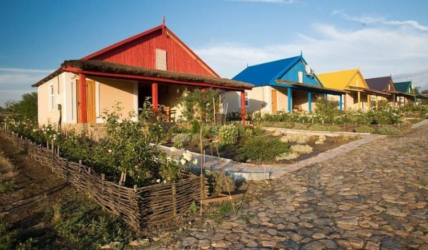
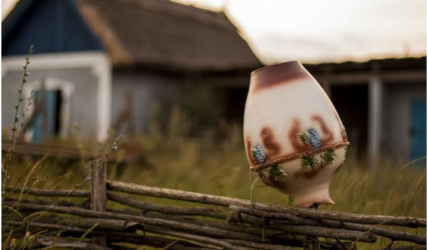
The complex is the most popular place for green tourism in the Odesa region and a unique place among the Bessarabian steppes, where ethnic minorities — Gagauz, Armenians, Greeks, and Moldovans — once lived, and were evicted in 1946 to create a military training ground. The landfill was never used and only in 2006 local entrepreneurs began to develop this area. Today, the village of Frumushika-Nova is the largest sheep-breeding complex for Karakul sheep, which also has an open-air ethnographic museum and a family recreation center, which welcomes anyone interested in fishing, visiting the winery, or just relaxing by the pool or bath. This is a place about the endless steppe, about the South and the history of Bessarabia, and about people who dedicate their entire lives to the prosperity of their land.
How to get there? Distance from Odesa: 190 km, the most convenient way is to get there by car.
🏙️ Odesa and Nerubai Catacombs
Odesa catacombs are a complex system of intricate mazes, tunnels, and passages longer than 2,500 kilometers. To a greater extent, catacombs are ordinary quarries, where people carried out active extraction of building stone and shell rock. Over time, basements and bunkers began to appear here, and during the Cold War, the Soviet government built a nuclear war shelter. The general system also includes natural caves, where the remains of ancient animals that lived here about four million years ago were found. During its existence, the Odesa catacombs became overgrown with many legends. Many say that ghosts and a caveman live here, and a real golden treasure is hidden. Although the catacombs are one of Odesa's major attractions, they cause a lot of trouble for the city. Underground voids provoke landslides, and scientists fear that even the Opera House may go underground.
Under the village of Nerubaiske near Odesa, there's part of the legendary Odesa catacombs. During World War II, they served as a refuge for guerrilla units. In the early 1940s, the occupiers walled up 70 partisans, most of whom died. After the war, the Guerrilla Glory Memorial Museum was established, which completely recreated the situation of that time. The total area of the museum is about 1 thousand square meters.
How to get there? Distance from Odesa: 12 km, you can reach the place by suburban bus, own vehicle or bicycle.
🏠 Marynivka Cossack hamlet
You can easily change your passive vacation into an adventure-active one! Close to Odesa, there's a Cossack hamlet, which transmits the traditions of the Black Sea Cossacks and introduces visitors to Ukrainian culture. During the one-day trip, you can visit the Museum of the History of the Black Sea Cossacks, take a walk around the Cossack estate, treat yourself to vodka and sandwiches with lard, attend a master class in wickerwork and change into traditional clothes to make a small photoshoot. A cheerful mood and splendid memories are definitely guaranteed!
How to get there? Distance from Odesa: 30 km towards the Khadzhibei Estuary. On the tour from Odesa, the transfer is included in the price.
🌿 Biliaivka
At first glance, a small town in Odesa near the Dniester delta is nothing special. However, part of its value is that only a few tourists know how beautiful it really is. This region is called the Ukrainian Amazon, and it's ideal for the now popular "green tourism" (which, incidentally, offers opportunities for trouble-free social distancing). You can stay there in a hotel or hostel, as well as in a tent, but you won't have to spend much time in them. Adventures will be waiting! There you can buy a tour of "Amazon Dniester" (the name speaks for itself), go fishing, go to the famous arboretum in the city. In short, there's never a dull moment. Find details on the special project "Let's go to Biliaivka" published by "Biliaivka.City"
How to get there? Biliaivka is 53 km from Odesa. You can reach it by car on the eE87 highway or by bus.
⭐ Odesa
Speaking of the Bessarabian region, we couldn't miss the obvious: the city of Odesa, a real pearl of the Black Sea. Many people have been there, many know its charms and shortcomings, but it should be said that Odesa is developing dynamically, it's great to relax not only in summer. Besides the beaches, impressive history and color of the city, and the range of tourist opportunities grows every year. Everyone can find something of their own in this great southern city.



















